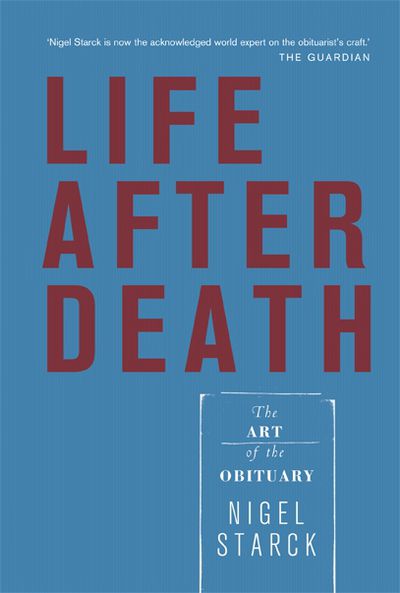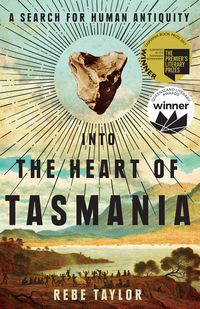Life After Death
The Art of the Obituary
Nigel Starck
Paperback
Ships in 4-6 weeks
Member discount
As an MUP member you get 40% off the price of this book.
Member discount
As an MUP member you get 40% off the price of this book.
Member discount
As an MUP member you get 15% off the price of this book.
Member discount
As an MUP member you get 35% off the price of this book.
Member discount
As an MUP member you get 40% off the price of this book.
Member discount
As an MUP member you get 45% off the price of this book.
Member discount
As an MUP member you get 50% off the price of this book.
Member discount
As an MUP member you get 55% off the price of this book.
Member discount
As an MUP member you get 100% off the price of this book.
Member discount
As an MUP member you get 30% off the price of this book.
Member discount
As an MUP member you get 25% off the price of this book.
Member discount
As an MUP member you get 25% off the price of this book.
Member discount
As an MUP member you get 25% off the price of this book.
Member discount
As an MUP member you get 25% off the price of this book.
Member discount
As an MUP member you get 40% off the price of this book.
Member discount
As an MUP member you get 10% off the price of this book.
Member discount
As an MUP member you get 10% off the price of this book.
Member discount
As an MUP member you get 40% off the price of this book.
Member discount
As an MUP member you get 45% off the price of this book.
Member discount
As an MUP member you get 50% off the price of this book.
Life After Death
The Art of the Obituary
Nigel Starck
Beginning with the first accounts of the deaths of princes published in early seventeenth-century newsbooks, athis lively book traces the development of the obituary in Britain, the United States and Australia.
The obituary pages of our quality newspapers have been described as 'oases of calm in a world gone mad', 'a lovely part of the paper to linger in', and 'writing that matters'. Entertaining, inspiring and informative, they serve as a legitimate instrument of history, and have enjoyed an extraordinary revival in popularity over the past twenty years.
Life After Death investigates-and celebrates-the development of the obituary form in the British, American, and Australian press. Author Nigel Starck tracks down the earliest exercise in obituary publication (in 1622), then traces the evolution of the form over four centuries, from times when the obituary was the reserve of royalty and privilege to its contemporary egalitarian mode. Along the way Dr Starck delves into a multitude of lives, from the heroic to the comic, the saintly to the downright villainous, the exemplary to the eccentric.
Meet, in the posthumous cast list, Major Digby…
Life After Death investigates-and celebrates-the development of the obituary form in the British, American, and Australian press. Author Nigel Starck tracks down the earliest exercise in obituary publication (in 1622), then traces the evolution of the form over four centuries, from times when the obituary was the reserve of royalty and privilege to its contemporary egalitarian mode. Along the way Dr Starck delves into a multitude of lives, from the heroic to the comic, the saintly to the downright villainous, the exemplary to the eccentric.
Meet, in the posthumous cast list, Major Digby…
The obituary pages of our quality newspapers have been described as 'oases of calm in a world gone mad', 'a lovely part of the paper to linger in', and 'writing that matters'. Entertaining, inspiring and informative, they serve as a legitimate instrument of history, and have enjoyed an extraordinary revival in popularity over the past twenty years.
Life After Death investigates-and celebrates-the development of the obituary form in the British, American, and Australian press. Author Nigel Starck tracks down the earliest exercise in obituary publication (in 1622), then traces the evolution of the form over four centuries, from times when the obituary was the reserve of royalty and privilege to its contemporary egalitarian mode. Along the way Dr Starck delves into a multitude of lives, from the heroic to the comic, the saintly to the downright villainous, the exemplary to the eccentric.
Meet, in the posthumous cast list, Major Digby Tatham-Warter, of Britain's Parachute Regiment, who carried an umbrella into battle just in case it rained; the absent-minded Australian barrister Pat Lanigan, who drove from Canberra to Sydney and then flew back, leaving his car behind; and the eccentric American publisher Eddie Clontz, whose newspaper reported (exclusively, of course) that 'tiny terrorists' were disguising themselves as garden gnomes.
Life After Death also incorporates a connoisseur's collection of ten obituaries reprinted in full: the subjects include Helen Keller, Diana Mosley, Quentin Crisp, George Wallace, and Rosa Parks. Without doubt, Life After Death is a book that will outlive its author-as an enduring celebration of journalism's dying art.
'Canon Smith expired after suffering an unfortunate disagreement with his bishop.'-The Sydney Morning Herald, 1882
'Minnesota Fats died at his home in Nashville. He was eighty-two, or perhaps ninety-five.'-The New York Times, 1996
Life After Death investigates-and celebrates-the development of the obituary form in the British, American, and Australian press. Author Nigel Starck tracks down the earliest exercise in obituary publication (in 1622), then traces the evolution of the form over four centuries, from times when the obituary was the reserve of royalty and privilege to its contemporary egalitarian mode. Along the way Dr Starck delves into a multitude of lives, from the heroic to the comic, the saintly to the downright villainous, the exemplary to the eccentric.
Meet, in the posthumous cast list, Major Digby Tatham-Warter, of Britain's Parachute Regiment, who carried an umbrella into battle just in case it rained; the absent-minded Australian barrister Pat Lanigan, who drove from Canberra to Sydney and then flew back, leaving his car behind; and the eccentric American publisher Eddie Clontz, whose newspaper reported (exclusively, of course) that 'tiny terrorists' were disguising themselves as garden gnomes.
Life After Death also incorporates a connoisseur's collection of ten obituaries reprinted in full: the subjects include Helen Keller, Diana Mosley, Quentin Crisp, George Wallace, and Rosa Parks. Without doubt, Life After Death is a book that will outlive its author-as an enduring celebration of journalism's dying art.
'Canon Smith expired after suffering an unfortunate disagreement with his bishop.'-The Sydney Morning Herald, 1882
'Minnesota Fats died at his home in Nashville. He was eighty-two, or perhaps ninety-five.'-The New York Times, 1996
Paperback
Ships in 4-6 weeks
Member discount
As an MUP member you get 40% off the price of this book.
Member discount
As an MUP member you get 40% off the price of this book.
Member discount
As an MUP member you get 15% off the price of this book.
Member discount
As an MUP member you get 35% off the price of this book.
Member discount
As an MUP member you get 40% off the price of this book.
Member discount
As an MUP member you get 45% off the price of this book.
Member discount
As an MUP member you get 50% off the price of this book.
Member discount
As an MUP member you get 55% off the price of this book.
Member discount
As an MUP member you get 100% off the price of this book.
Member discount
As an MUP member you get 30% off the price of this book.
Member discount
As an MUP member you get 25% off the price of this book.
Member discount
As an MUP member you get 25% off the price of this book.
Member discount
As an MUP member you get 25% off the price of this book.
Member discount
As an MUP member you get 25% off the price of this book.
Member discount
As an MUP member you get 40% off the price of this book.
Member discount
As an MUP member you get 10% off the price of this book.
Member discount
As an MUP member you get 10% off the price of this book.
Member discount
As an MUP member you get 40% off the price of this book.
Member discount
As an MUP member you get 45% off the price of this book.
Member discount
As an MUP member you get 50% off the price of this book.





